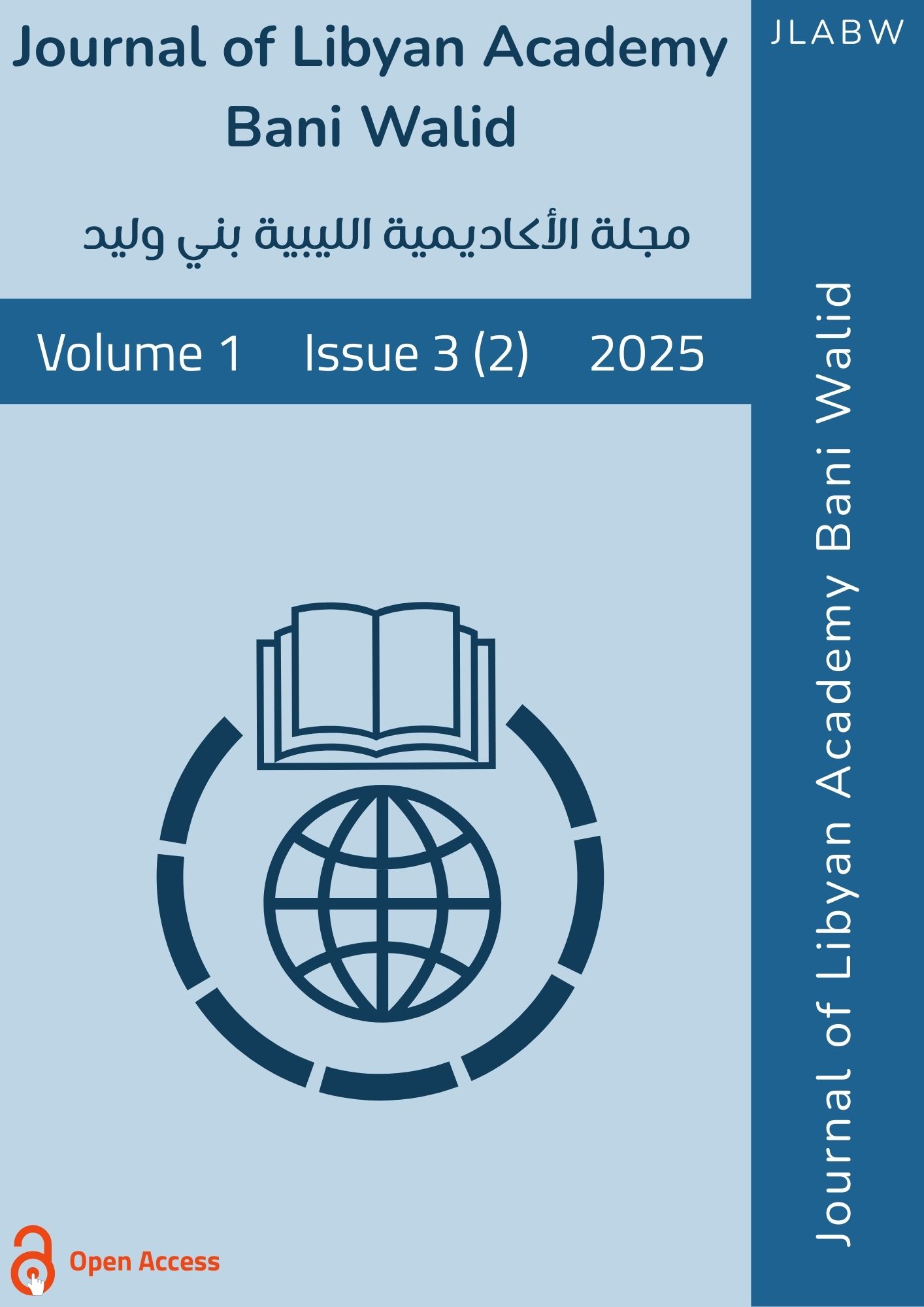The Study of the Five Best Medicinal Herbs
DOI:
https://doi.org/10.61952/jlabw.v1i3.212Keywords:
herbs, medicinal, reconnize, modern, chemical, diseasesAbstract
This Study aimed to identify the top five medicinal herbs and their corresponding therapeutic uses. The study was conducted between 2 October To 30 December, 2024. A total of 35 samples were randomly selected to determine the importance of medicinal herbs and their uses. The results of the current study showed that the use of herbal medicine in treating diseases accounted for 63% of the total, compared to the use of modern medicine at 40%. Therefore, this provides hope for the use of medicinal herbs in treatment. We also find that patients are less aware of the side effects of natural medicines compared to those of chemical medicines, at 43%. Studies also confirm the possibility of using herbs to treat certain diseases at 38%, the extent of Libyan citizens' interest in using herbs for treatment at 54%, and the feasibility of treatment with herbal medicine compared to modern medicine at 60%. And to recognize the importance of treatment with natural herbs in treating some diseases, and to demonstrate the few side effects of herbal medicine compared to the side effects of chemical medicine and to emphasize the idea that natural medicine is the basis of chemical medicine, and that it has few side effects.
References
Thomas B and Rajendran A. 2013, Less known ethnomedicinal plants used by kurichar tribe of wayanad district, Southern Western Ghats kerala, India. Botany Research International 6.2.
Kavimani S., Divya S., Mahalakshmi G. 2018, Toxicity Studies Related to Medicinal Plants, Natural products and Drug Discovery, pages 401-505.
Ravindra V., Prakash S. 2022, Ginger A Potential Source of Therapeutic and pharmaceutical compounds, journal of Food Bioactives.
Ruchi B. S., Deepak K. S., Sandra C.b., Alvaro M. V. 2015, Gingerols and shogaols: Important nutraceutical principles from ginger, Phytochemistry, Volume 117, Pages 554-568.
Alston J.M and Pardey P.G. 2006, Agricultural productivity. Subchapter in historical statistics of the United states: Earliest times to the present, Millennial edition, Volume 4, part D, Economic sectors.
Kumar N.V., Murthy P.S., Manjunatha J.R., Bettadaiah B.K. 2014,Synthesis and quorum sensing inhibitory activity of key phenolic compounds of ginger and their derivatives. Food Chem. 159:451–457.
Srivastava, J. K., Shankar, E., Gupta, S. (2010). Chamomile: A herbal medicine of the past with a bright future. Molecular medicine reports, 3(6), 895-901
Adams, R.P., 2007. Identification of Essential Oil Components by Gas Chromatography/Mass Spectrometry. 4th ed. , Allured Pub Corp: New York, NY, USA, 823 p., ISBN: 978-1932633214.
Chauhan, E.S.; Aishwarya, J. 2018, Nutraceutical analysis of Marticariarecutita (Chamomile) dried leaves and flower powder and comparison between them. Int. J. Phytomed. 10, 111–114.
Chauhan, R.; Singh, S.; Kumar, V.; Kumar, A.; Kumari, A.; Rathore, S.; Kumar, R.; Singh, S. A, 2021. Comprehensive review on biology, genetic improvement, agro and process technology of German Chamomile (Matricaria chamomilla L.). Plants, 11,29






